The Canary Islands Foodie Guide
(Local Dishes, Drinks, Wines, Recipes)
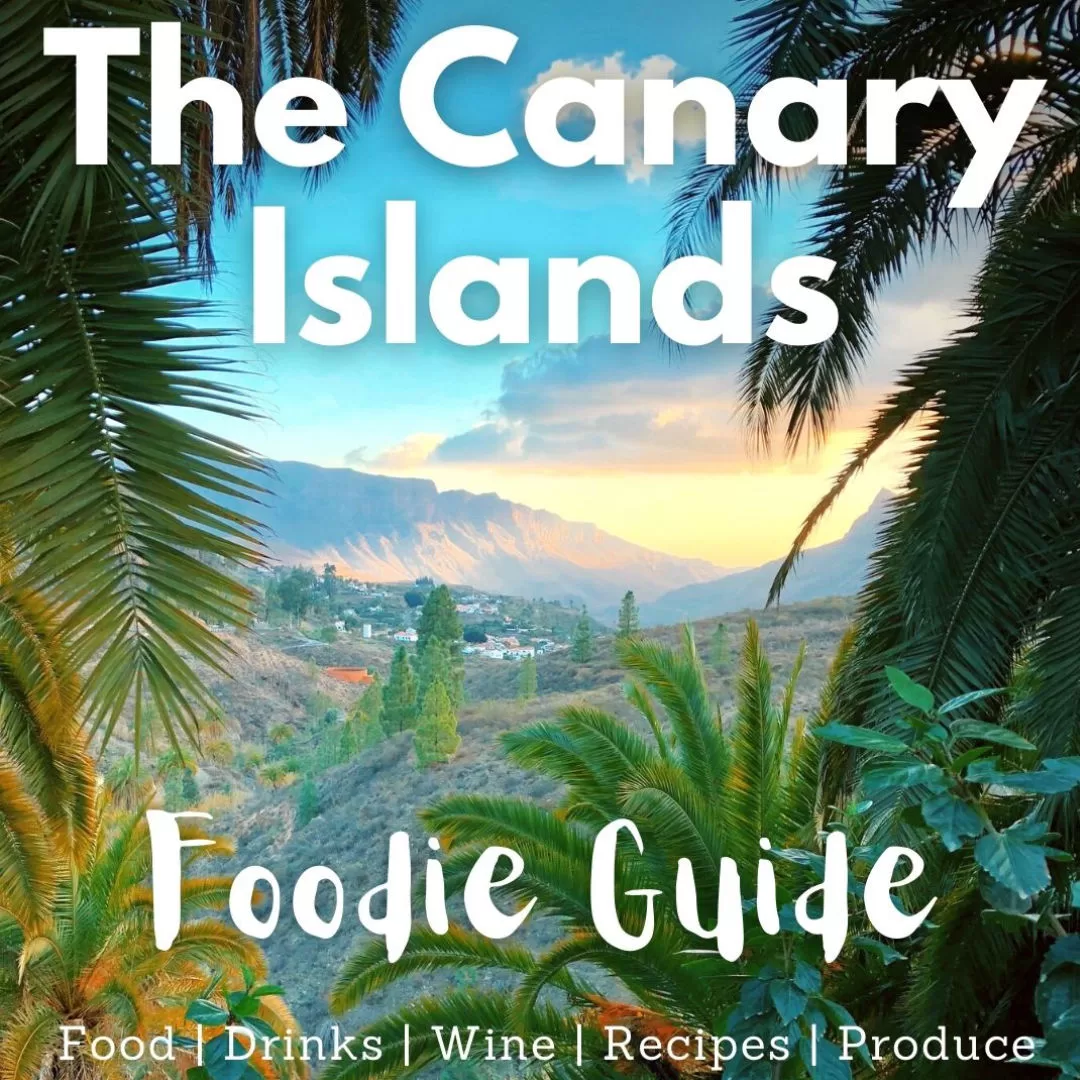
The Canary Islands guide offers a peek into the exceptional produce made on the islands, what to eat, what dishes to try, and plenty of recipes to try at home!
An introduction to The Canary Islands
C
ulminating off the west coast of northern Africa, the Canary Islands have always sat at the crossroads between America and Europe. Perhaps this is why the cuisine is both diverse and interwoven with influences from the world over.
The volcanic archipelago of islands enjoys rich soil that provides fertile ground for high-quality locally-grown produce, with potatoes, almonds, avocados, and locally produced honey appearing in many traditional dishes.
Enjoying a warm year-round climate, the Canary Islands have many dishes that complement the endless summer vibe. Rusa salad (Ensalada Rusa/ Russian salad) is made with a little corn added to the recipe on Gran Canaria and is a fond year-round tapas dish amongst the locals.
The Canary Islands Geography
Located 100km (60 miles) to the west of Morocco, The Canary Islands are a volcanic archipelago made up of islands with 8 main islands, Tenerife, Fuerteventura, Gran Canaria, Lanzarote, La Palma, La Gomera, El Hierro, and La Graciosa.
Most visitors to the Canary Islands will arrive by flight and land in either Gran Canaria or Tenerife, from where connecting flights take visitors to the smaller islands.
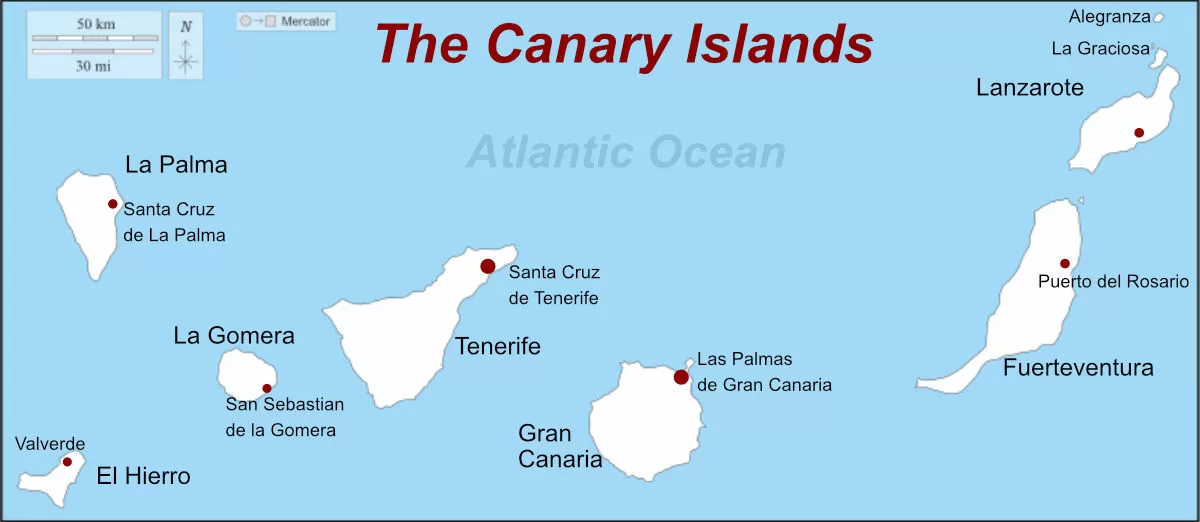
Canary Islands food and produce
Hearty dishes such as Rancho Canario, a thick noodle-based soup, are popular throughout the isles. You’ll find excellent examples of Pollo al salmorejo and Conejo al salmorejo in nearly every restaurant, with the rich aroma of marinated chicken cooked in white wine and spices emanating from many kitchens!
Besides potatoes, meat and fish also feature in most dishes, and Baifo is a typical marinaded goat meat dish that is often served during Christmas time.
Meat lovers will celebrate by sampling the famous Adobo de cerdo, a slow-cooked shoulder of pork that’s so tender it falls off the bone. The meat is served in a rich and flavorsome piquant sauce made of paprika, oregano, garlic, salt, and a generous shot or two of sherry vinegar.
Coriander is grown in abundance on the Canary Islands and adored by the locals, who make ‘coriander mojo picón’, a spicy sauce made with coriander, green chilies, olive oil, cumin seeds, and vinegar.
Famous produce from the Canary Islands
- Bananas known as Platano Canario. Typically found smaller and sweeter than regular bananas.
- Honey, There a 13 varieties on the Canary Islands, including avocado honey or one made from the local plant Tajinase (Tenerife bugloss).
- Queso Majorero made on Fuerteventura
- Queso Palmero (Palma)
- Coffee is produced on Gran Canaria (Agaete Valley)
- Mojo salsa (A red or green sauce that’s made with peppers, olive oil, and garlic)
- Gofio
- Papaya and other fruits.
- Almogrote
- Bienmesabe
- Barraquito (a stripey coffee made with alcohol)
- Almond-based desserts such as Principe Alberto.

Typical Dishes of the Canary Islands
- Papas arrugadas – salt-crusted potatoes served with coriander Mojo
- Rancho Canario – A thick noodle soup made with chicken, pork, vegetables, potatoes, and chickpeas.
- Baifo – Made with marinated goat meat, generous amounts of garlic, and herbs. This dish is very popular during Christmas time celebrations.
- Pollo al salmorejo
- Conejo al salmorejo – A marinated meat dish, cooked in white wine and seasoned with cumin, oregano, paprika, and thyme.
- Ropa Vieja – literally translates to ‘Old clothes’. A stew made with leftovers and includes meat (chicken, beef, or pork), a mixture of seasonal vegetables, garbanzo beans, and potatoes.
- Sancocho Canario – A whole fried or baked fish seasoned with local spices and salt and served with gofio and papas arrugadas with mojo picón.
- Adobo de cerdo – Slow-cooked shoulder of pork in a rich, piquant sauce
- Tortillas de calabaza (Pumpkin tortillas)
Desserts of the Gran Canarias
- Bienmesabe – a sweet, soft puree made with ground almonds, egg yolk, sugar, lemon zest and cinnamon (Gran Canaria)
- Sighs of Moya – Similar to macarons and made with sugar, egg and lemon
- Frangollo Canario – Made from crushed legumes, cereals and millet (corn)
- Prince Albert- A Chocolate mousse made from almonds and hazelnuts. It is sometimes combined with cream.
- Canarian marzipan – A large round cake made with a combination of almonds, lemon and cinnamon.
- Leche machanga – Similar to a custard, prepared with milk, lemon, vanilla powder, cinnamon and sugar, and it is decorated with chocolate to grate.
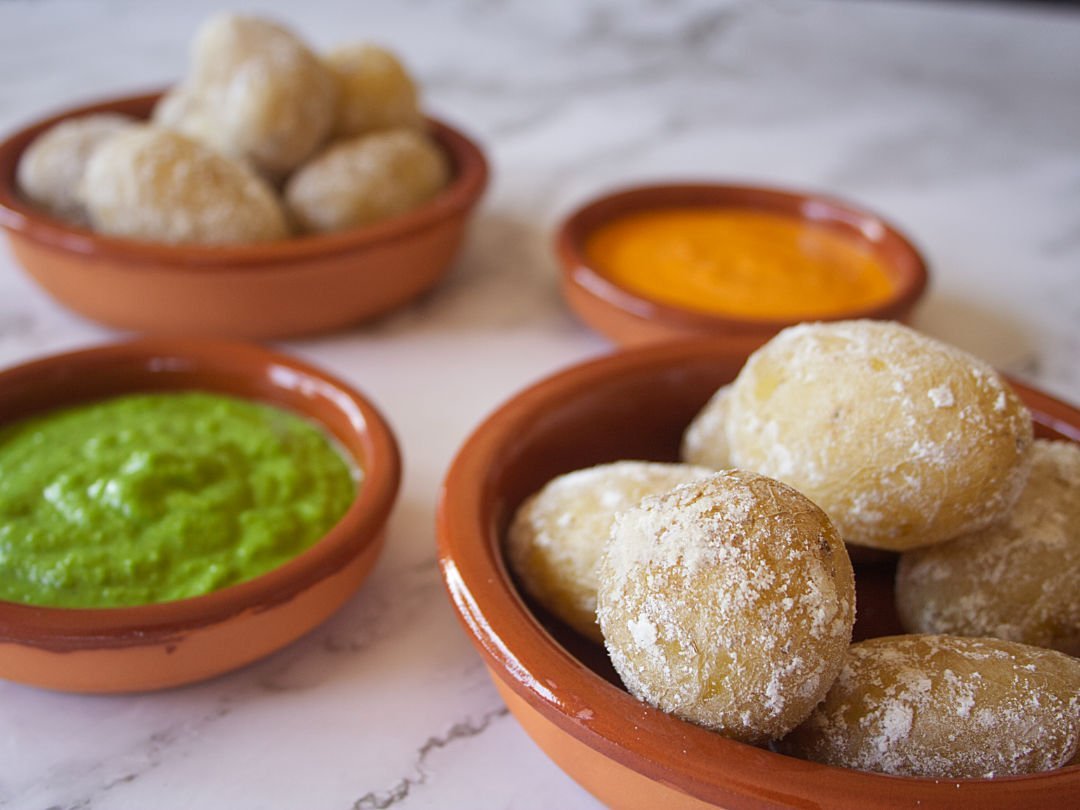
Drinks of the islands
- Arehucas Rum (Arucus Town)
- Beer – Tropical (made in Las Palmas, Gran Canarias), and Dorada (made in Tenerife)
- Mejunje – A local liqueur made from honey rum with a blend of aromatic lemongrass, lemon verbena, cinnamon, lemon peel, and coffee beans.
- Barraquito – Authentic layered coffee drink from the islands
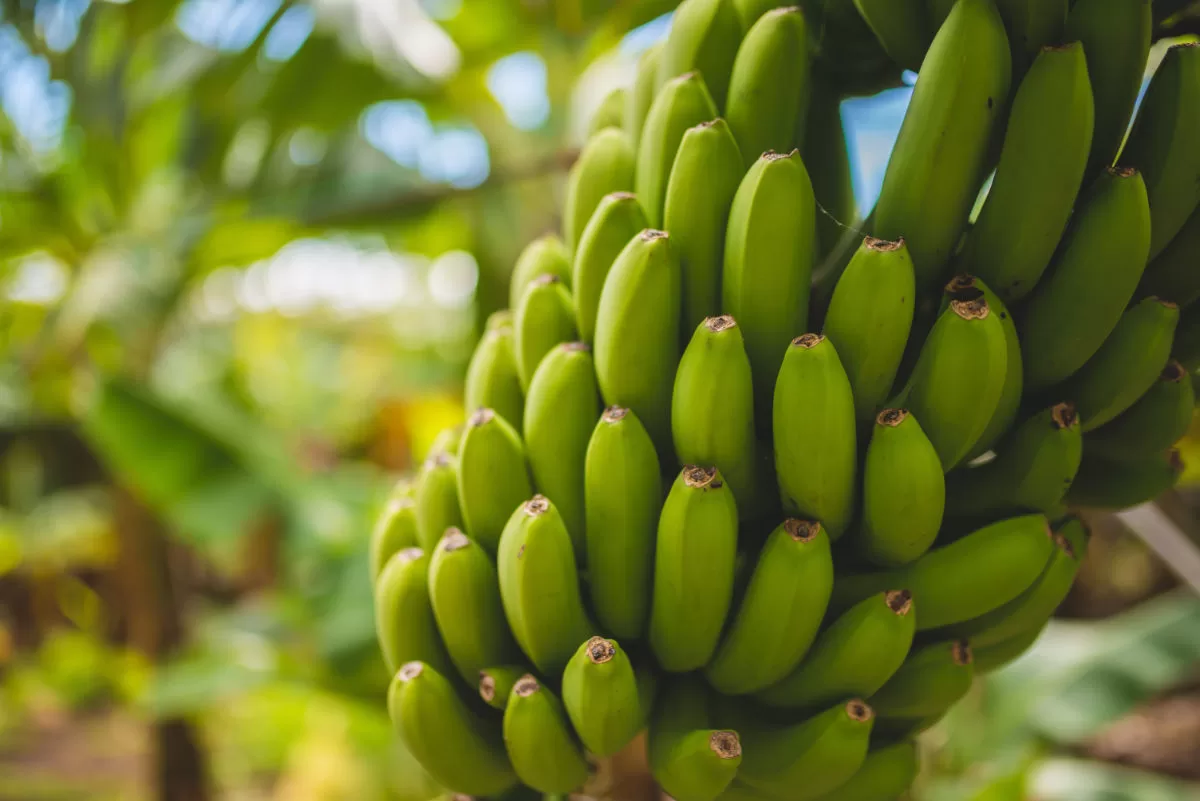
Banana wines
Perhaps one of the Canary islands most famous productions is banana wine.
- Platé Pasión Frizzante is made from fermented bananas and passion fruit from Tenerife. With an alcohol of only 6%, it is fruity and a little sweet.
- Platé Blanco de Platano is made solely from bananas, and it has an alcohol level of 12.5%. It has a sweet, exotic flavor like bananas.
Wines of the Canary Islands
Wine is also produced extensively over six of the Canary Islands (Tenerife, Lanzarote, Gran Canaria, La Palma, El Hierro, and La Gomera) with Tenerife being the largest island with the greatest volume of wine production.
- White grape varieties are Listán Blanco, Malvasía Aromática, Malvásia Volcánia, Albillo Criollo, Vijariego, Mostacel and Marmajuelo
- Malvasía Aromática (La Palma and Tenerife)
- Malvasía Volcánica (Lanzarote)
- Albillo Criollo (La Palma)
All of the island wine regions have their own DOP (denominaciones de origen). The high wind and climate challenges have been overcome by the vineyard owners ingeniously building shallow protective walls around the vines, ensuring they absorb moisture while being well protected from harsh winds.
The rich volcanic soil lends to rich and flavorsome grape varieties with many distinctive styles that are world-renowned.
Listán Blanco wine
The Native Listán Blanco variety is most popular, gaining many notable mentions by wine lovers the world over. The Malvasía Aromática variety is prominently found in La Palma and Tenerife has aromas of grapefruit and apricots accompanying a relatively high alcohol content.
Noteworthy Canary Island wines include:
- Linaje del Pago Tinto 2019, Listán Negro, DO Tacoronte-Acentejo, Tenerife
- Atlante 2018, Listán Blanco de Canarias/Albillo Criolla, DO Valle de la Orotava, Tenerife
- MW Listán Blanco Organic 2018, Vinos Altos de Trevejos, DO Abona, Tenerife
- El Grifo ”Lias” Malvasia Vulcánica, Lanzarote, Canary Islands
- Malvasía Volcánica Seco 2019, Bodega Vulcano de Lanzarote, the Canary Islands
- Tinto 2018 Listán Negro, Bodega Vulcano de Lanzarote, Canary Islands
Cheeses of the Islands
- Quesa de cabra – A goat’s cheese, the two most delicious varieties of which are Queso Majorero, produced in Fuerteventura and Queso Palmero (La Palma).
- Arico – smoked goat’s cheese from Tenerife
Flor Cheese – Produced by combining cow and sheep milk from the islands. It has a yellowish rind and a fatty texture
Learn the secrets of the Mediterranean Diet –
It’s no secret that the Mediterranean diet is healthy. It has been proven in numerous studies from all corners of the world, it aids weight loss, reduces the risk of heart disease and type 2 diabetes, as well as a growing list of other health benefits.
Find out what’s most exciting about the diet and create some incredibly tasty and simple Spanish recipes.
Looking for more travel inspiration?
Check out our other Regional foodie guides from all over Spain!
The Basque Country
Straddling part of the border between France and Spain, the Basque Country (País Vasco) has an incredibly diverse landscape that extends far beyond the renowned foodie capitals of larger cities such as San Sebastian and Bilbao. While the region is small, it has the highest concentration of Michelin-starred restaurants in the world per capita.
Galicia
Exploring the far northern Galicia region by food is like opening a foodie treasure trove. With a rugged coastline that divides two seas, undulating hills, and large fertile plains that benefit from the highest annual rainfall in Spain. Galicia is blessed with exceptional quality fresh produce, seafood, meat, and dairy products at every turn.
Galician cuisine is perhaps most famous for the stunning dessert, the Tarta de Santiago, but visitors to the region should take time to explore the many delicacies and dishes that are made in the region.
Madrid
They say that all roads lead to Madrid and a small stone slab lies discretely within Madrid’s Sol Plaza celebrating the geographic kilometer ZERO of Spain. But, it’s just a short stroll in any direction where you’ll find the rich aromas of authentic Spanish food wafting from the alleyways and narrow cobbled streets that are lined with Madrid’s famous tapas bars and prestigious restaurants.
Madrid is not only the geographic center of Spain but also the renowned melting pot where Spain’s culinary cultures merge. This is no more evident than in the enormous range of Spanish and international cuisine on offer throughout the capital, and with nearly 10,000 restaurants within the Madrid region, you’re spoilt for choice!
The Valencia Region
With its white-sand beaches and turquoise water of the Mediterranean Sea, the Valencia region harbors some of the best cuisine and fresh produce in Spain. Orange groves are dotted all the way up and down the region, and the rich fertile soil makes for ideal vineyards, producing excellent wines. It’s also one of only two UNESCO-listed locations for gastronomy and is home to many of Spain’s most renowned restaurants.
Catalonia / Cataluña
The Catalonia region is perhaps best known for its thriving capital, Barcelona, but a close second when you mention Catalonia is the food. The region offers a wealth of authentic Spanish cuisine that has resonated all around the world.
With its borders spanning from the Mediterranean Sea in the east, to the stunning rugged grazing plains of Aragón, to the picturesque mountainous zones of the Pyrenees mountain ranges, the Catalonia region has it all!
The Spanish Radish Blog
Spanish Gazpacho Andaluz | VEGAN Chilled Soup Recipe
Spanish Gazpacho Andaluz Spain's favorite VEGAN chilled soup recipe! Gazpacho Andaluz is a delicious and fresh soup recipe that will transport your tastebuds straight to the sun-kissed landscape of Andalusia, Spain. This soup is...
Mediterranean Rainbow Salad with Easy Olive Oil Salad Dressing | Healthy VEGAN Recipe
Mediterranean Rainbow Salad with Easy Olive Oil Salad Dressing Embrace the summer vibes with this Mediterranean twist on a classic and colorful Rainbow salad. This recipe is healthy, loaded with healthy salad veggies that are a...
Spanish-Style Chicken Marinade – 30 Sec Recipe with 8 Ingredients
Spanish-Style Chicken Marinade Elevate your chicken recipes with this super easy Spanish-style chicken marinade with big Spanish flavors. This marinade requires no special equipment (a jar and a fork) and can be whipped up in...
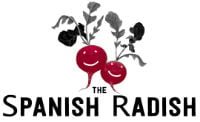
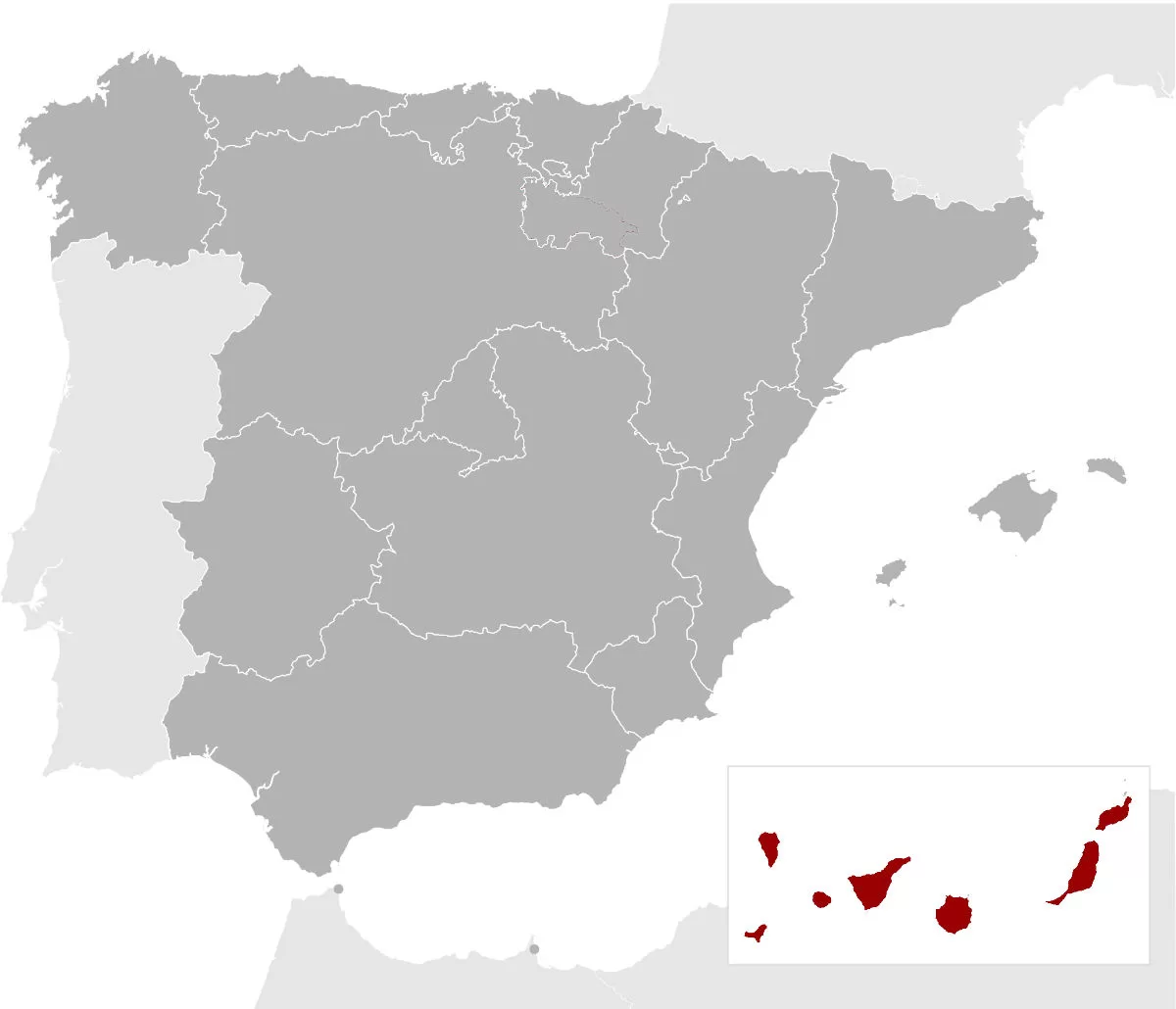
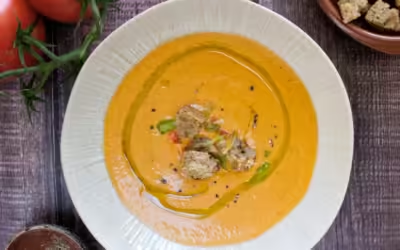
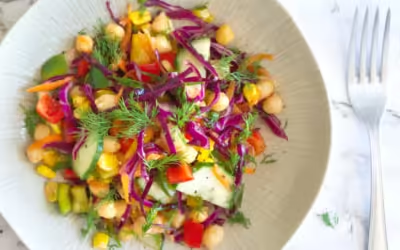
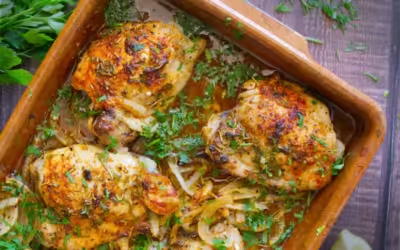
0 Comments